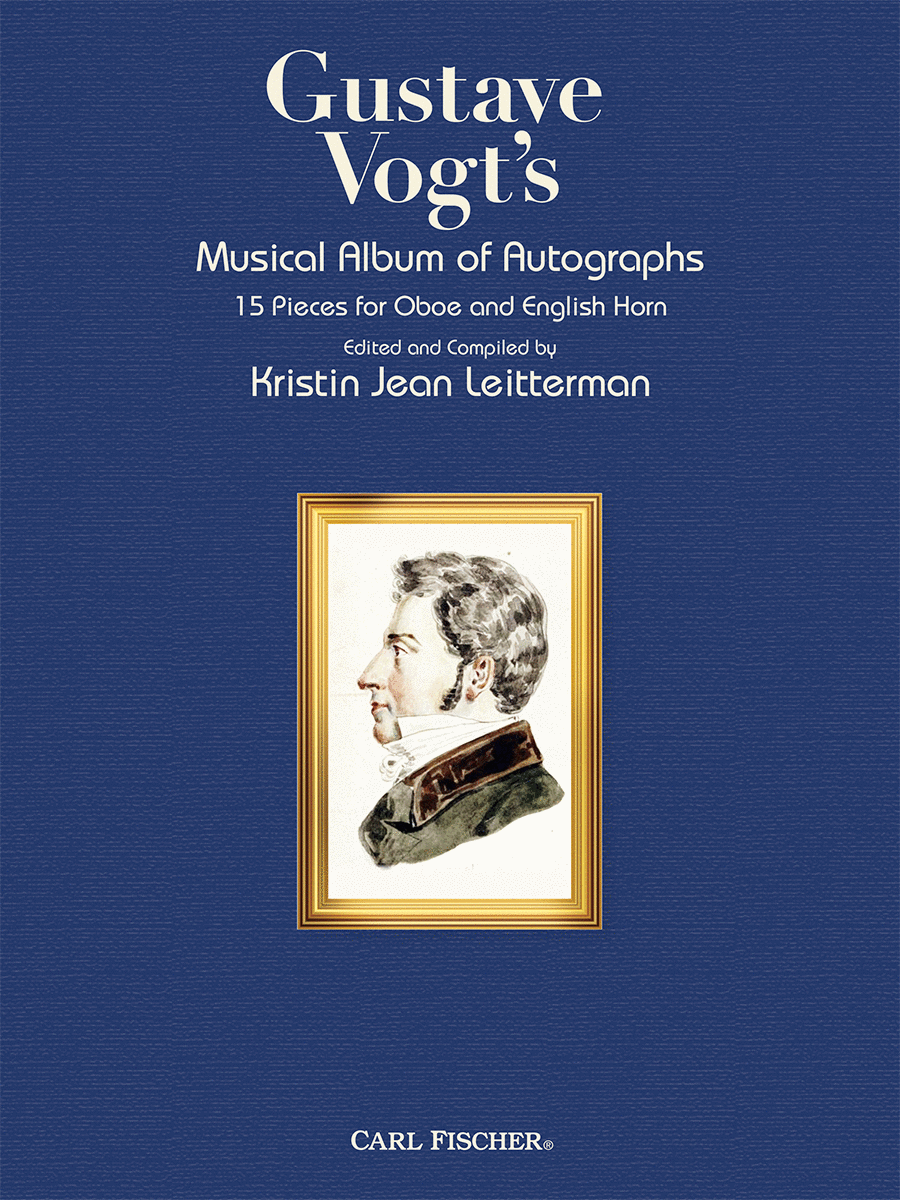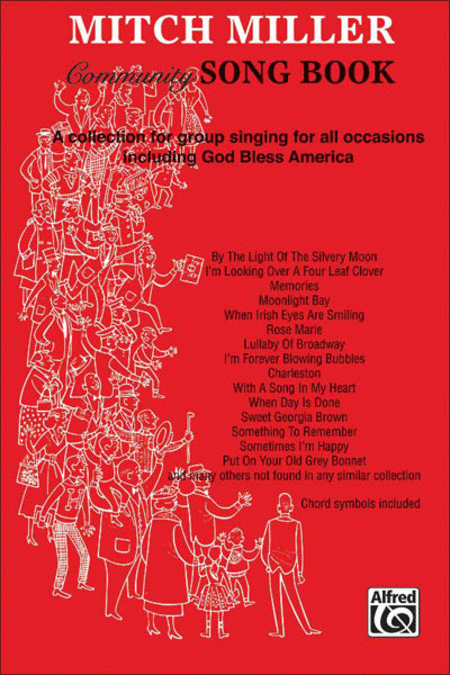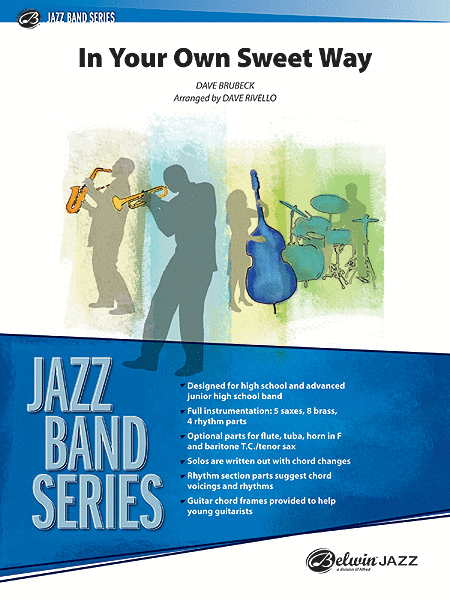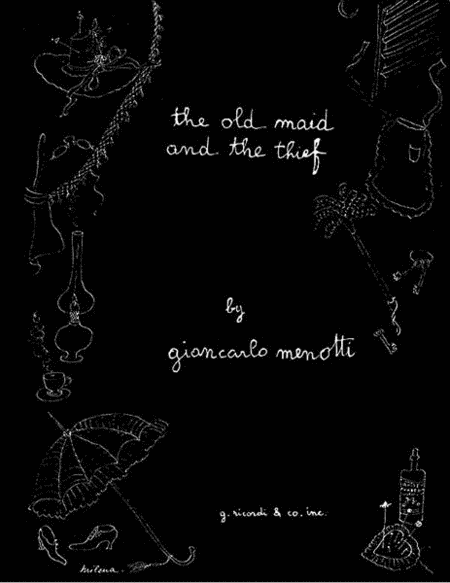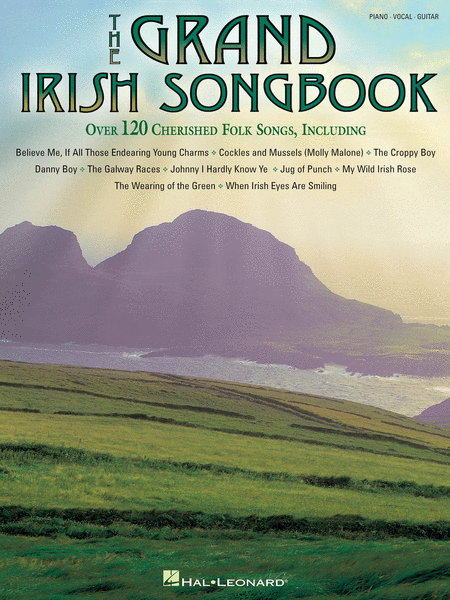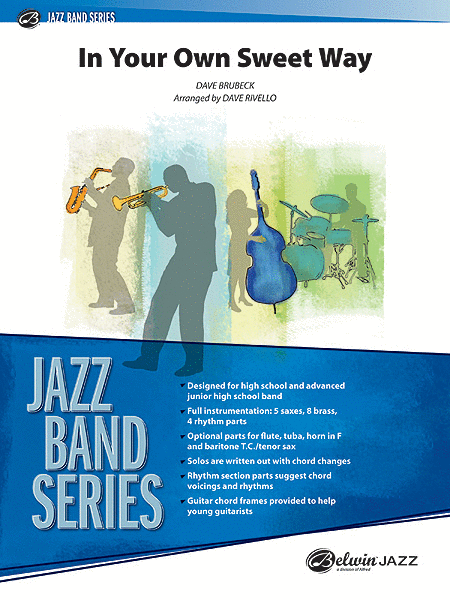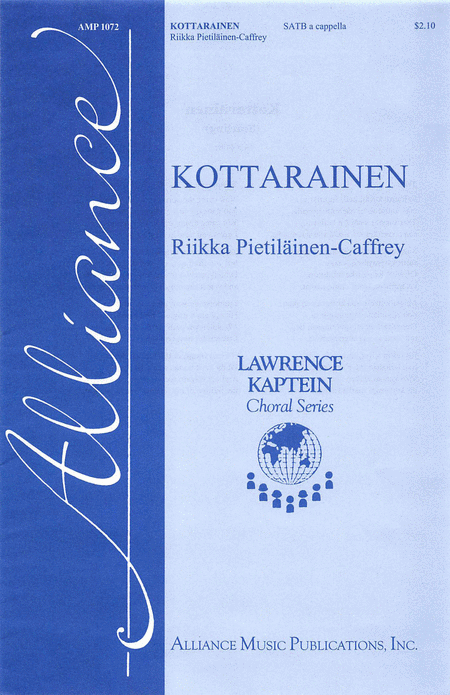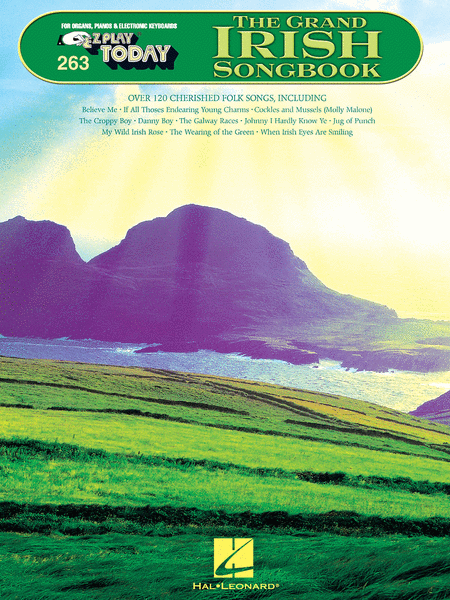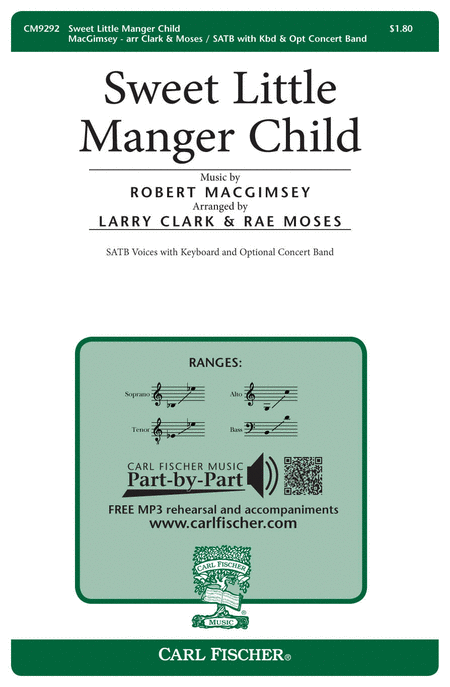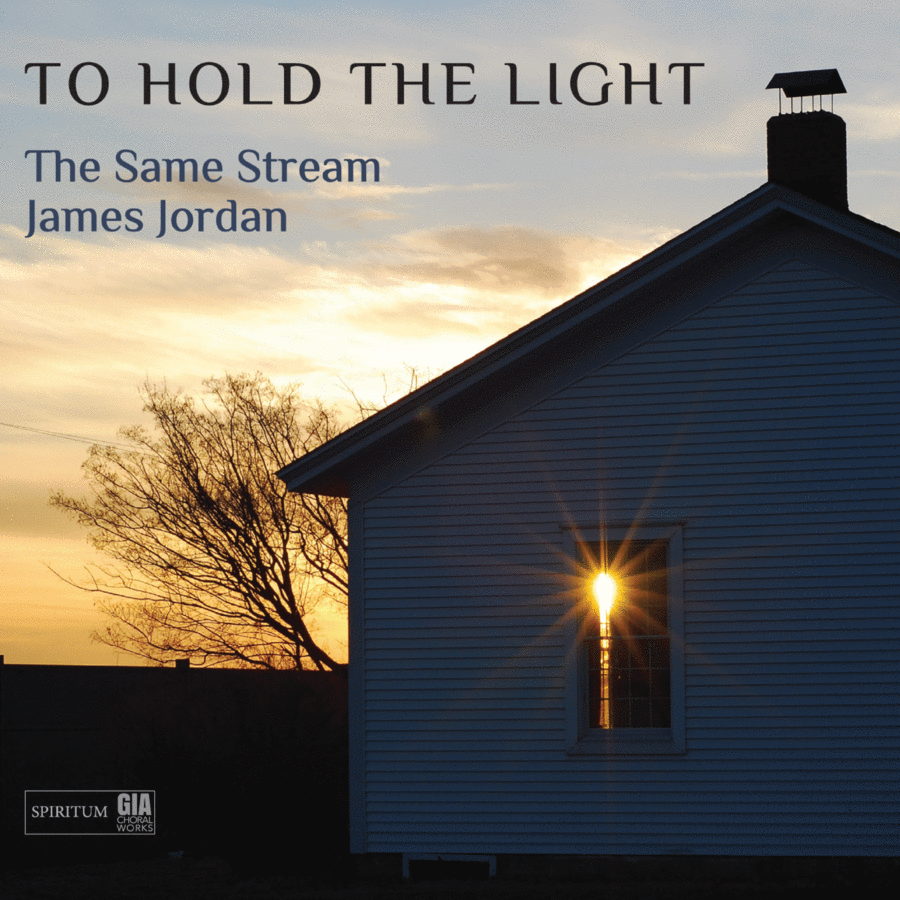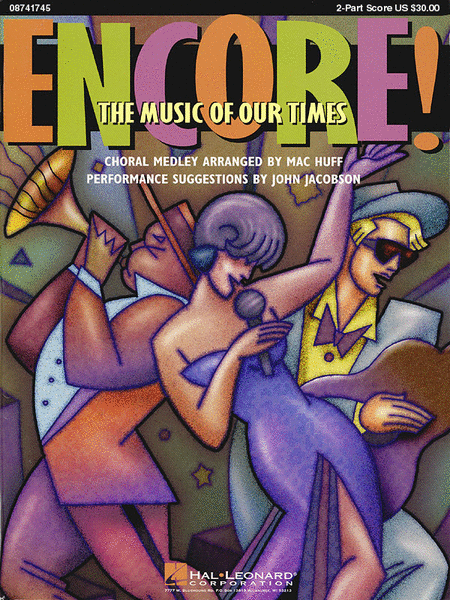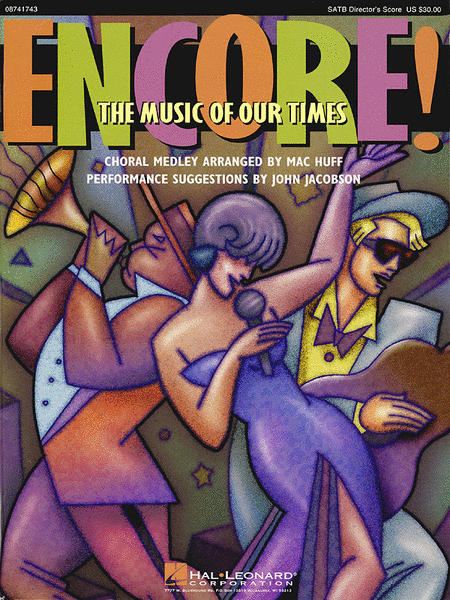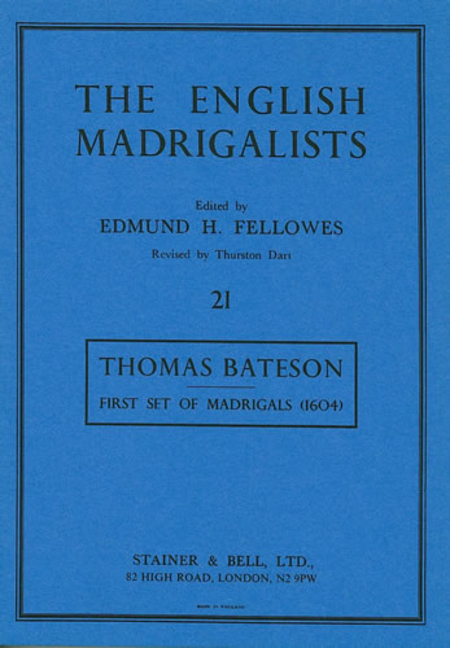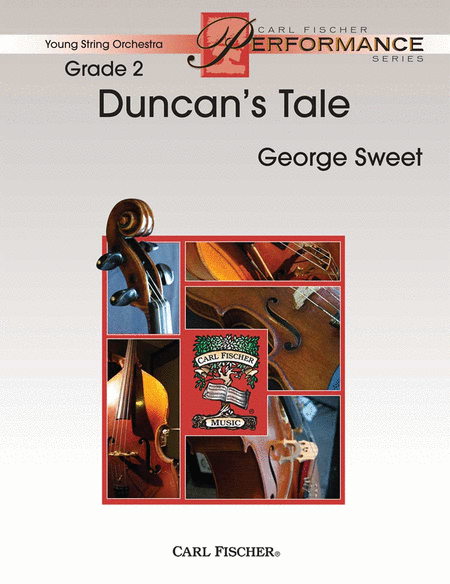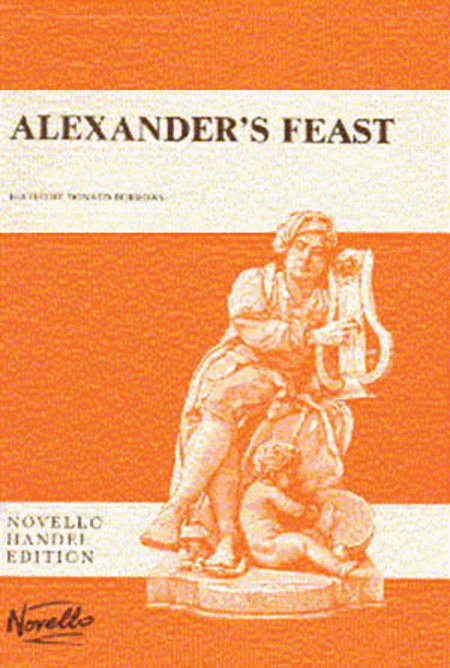|
| Gustave Vogt's Musical Album of Autographs
Cor anglais, Piano
Carl Fischer
Chamber Music English Horn, Oboe SKU: CF.WF229 15 Pieces for Oboe and ...(+)
Chamber Music English
Horn, Oboe SKU:
CF.WF229 15 Pieces
for Oboe and English
Horn. Composed by
Gustave Vogt. Edited by
Kristin Jean Leitterman.
Collection - Performance.
32+8 pages. Carl Fischer
Music #WF229. Published
by Carl Fischer Music
(CF.WF229). ISBN
9781491153789. UPC:
680160911288. Intro
duction Gustave Vogt's
Musical Paris Gustave
Vogt (1781-1870) was born
into the Age of
Enlightenment, at the
apex of the
Enlightenment's outreach.
During his lifetime he
would observe its effect
on the world. Over the
course of his life he
lived through many
changes in musical style.
When he was born,
composers such as Mozart
and Haydn were still
writing masterworks
revered today, and
eighty-nine years later,
as he departed the world,
the new realm of
Romanticism was beginning
to emerge with Mahler,
Richard Strauss and
Debussy, who were soon to
make their respective
marks on the musical
world. Vogt himself left
a huge mark on the
musical world, with
critics referring to him
as the grandfather of the
modern oboe and the
premier oboist of Europe.
Through his eighty-nine
years, Vogt would live
through what was perhaps
the most turbulent period
of French history. He
witnessed the French
Revolution of 1789,
followed by the many
newly established
governments, only to die
just months before the
establishment of the
Third Republic in 1870,
which would be the
longest lasting
government since the
beginning of the
revolution. He also
witnessed the
transformation of the
French musical world from
one in which opera
reigned supreme, to one
in which virtuosi,
chamber music, and
symphonic music ruled.
Additionally, he
experienced the
development of the oboe
right before his eyes.
When he began playing in
the late eighteenth
century, the standard
oboe had two keys (E and
Eb) and at the time of
his death in 1870, the
System Six Triebert oboe
(the instrument adopted
by Conservatoire
professor, Georges
Gillet, in 1882) was only
five years from being
developed. Vogt was born
March 18, 1781 in the
ancient town of
Strasbourg, part of the
Alsace region along the
German border. At the
time of his birth,
Strasbourg had been
annexed by Louis XIV, and
while heavily influenced
by Germanic culture, had
been loosely governed by
the French for a hundred
years. Although it is
unclear when Vogt began
studying the oboe and
when his family made its
move to the French
capital, the Vogts may
have fled Strasbourg in
1792 after much of the
city was destroyed during
the French Revolution. He
was without question
living in Paris by 1798,
as he enrolled on June 8
at the newly established
Conservatoire national de
Musique to study oboe
with the school's first
oboe professor,
Alexandre-Antoine
Sallantin (1775-1830).
Vogt's relationship with
the Conservatoire would
span over half a century,
moving seamlessly from
the role of student to
professor. In 1799, just
a year after enrolling,
he was awarded the
premier prix, becoming
the fourth oboist to
achieve this award. By
1802 he had been
appointed repetiteur,
which involved teaching
the younger students and
filling in for Sallantin
in exchange for a free
education. He maintained
this rank until 1809,
when he was promoted to
professor adjoint and
finally to professor
titulaire in 1816 when
Sallantin retired. This
was a position he held
for thirty-seven years,
retiring in 1853, making
him the longest serving
oboe professor in the
school's history. During
his tenure, he became the
most influential oboist
in France, teaching
eighty-nine students,
plus sixteen he taught
while he was professor
adjoint and professor
titulaire. Many of these
students went on to be
famous in their own
right, such as Henri Brod
(1799-1839), Apollon
Marie-Rose Barret
(1804-1879), Charles
Triebert (1810-1867),
Stanislas Verroust
(1814-1863), and Charles
Colin (1832-1881). His
influence stretches from
French to American oboe
playing in a direct line
from Charles Colin to
Georges Gillet
(1854-1920), and then to
Marcel Tabuteau
(1887-1966), the oboist
Americans lovingly
describe as the father of
American oboe playing.
Opera was an important
part of Vogt's life. His
first performing position
was with the
Theatre-Montansier while
he was still studying at
the Conservatoire.
Shortly after, he moved
to the Ambigu-Comique
and, in 1801 was
appointed as first oboist
with the Theatre-Italien
in Paris. He had been in
this position for only a
year, when he began
playing first oboe at the
Opera-Comique. He
remained there until
1814, when he succeeded
his teacher,
Alexandre-Antoine
Sallantin, as soloist
with the Paris Opera, the
top orchestra in Paris at
the time. He played with
the Paris Opera until
1834, all the while
bringing in his current
and past students to fill
out the section. In this
position, he began to
make a name for himself;
so much so that specific
performances were
immortalized in memoirs
and letters. One comes
from a young Hector
Berlioz (1803-1865) after
having just arrived in
Paris in 1822 and
attended the Paris
Opera's performance of
Mehul's Stratonice and
Persuis' ballet Nina. It
was in response to the
song Quand le bien-amie
reviendra that Berlioz
wrote: I find it
difficult to believe that
that song as sung by her
could ever have made as
true and touching an
effect as the combination
of Vogt's instrument...
Shortly after this,
Berlioz gave up studying
medicine and focused on
music. Vogt frequently
made solo and chamber
appearances throughout
Europe. His busiest
period of solo work was
during the 1820s. In 1825
and 1828 he went to
London to perform as a
soloist with the London
Philharmonic Society.
Vogt also traveled to
Northern France in 1826
for concerts, and then in
1830 traveled to Munich
and Stuttgart, visiting
his hometown of
Strasbourg on the way.
While on tour, Vogt
performed Luigi
Cherubini's (1760-1842)
Ave Maria, with soprano
Anna (Nanette) Schechner
(1806-1860), and a
Concertino, presumably
written by himself. As a
virtuoso performer in
pursuit of repertoire to
play, Vogt found himself
writing much of his own
music. His catalog
includes chamber music,
variation sets, vocal
music, concerted works,
religious music, wind
band arrangements, and
pedagogical material. He
most frequently performed
his variation sets, which
were largely based on
themes from popular
operas he had, presumably
played while he was at
the Opera. He made his
final tour in 1839,
traveling to Tours and
Bordeaux. During this
tour he appeared with the
singer Caroline Naldi,
Countess de Sparre, and
the violinist Joseph
Artot (1815-1845). This
ended his active career
as a soloist. His
performance was described
in the Revue et gazette
musicale de Paris as
having lost none of his
superiority over the
oboe.... It's always the
same grace, the same
sweetness. We made a trip
to Switzerland, just by
closing your eyes and
listening to Vogt's oboe.
Vogt was also active
performing in Paris as a
chamber and orchestral
musician. He was one of
the founding members of
the Societe des Concerts
du Conservatoire, a group
established in 1828 by
violinist and conductor
Francois-Antoine Habeneck
(1781-1849). The group
featured faculty and
students performing
alongside each other and
works such as Beethoven
symphonies, which had
never been heard in
France. He also premiered
the groundbreaking
woodwind quintets of
Antonin Reicha
(1770-1836). After his
retirement from the Opera
in 1834 and from the
Societe des Concerts du
Conservatoire in 1842,
Vogt began to slow down.
His final known
performance was of
Cherubini's Ave Maria on
English horn with tenor
Alexis Dupont (1796-1874)
in 1843. He then began to
reflect on his life and
the people he had known.
When he reached his 60s,
he began gathering
entries for his Musical
Album of Autographs.
Autograph Albums Vogt's
Musical Album of
Autographs is part of a
larger practice of
keeping autograph albums,
also commonly known as
Stammbuch or Album
Amicorum (meaning book of
friendship or friendship
book), which date back to
the time of the
Reformation and the
University of Wittenberg.
It was during the
mid-sixteenth century
that students at the
University of Wittenberg
began passing around
bibles for their fellow
students and professors
to sign, leaving messages
to remember them by as
they moved on to the next
part of their lives. The
things people wrote were
mottos, quotes, and even
drawings of their family
coat of arms or some
other scene that meant
something to the owner.
These albums became the
way these young students
remembered their school
family once they had
moved on to another
school or town. It was
also common for the
entrants to comment on
other entries and for the
owner to amend entries
when they learned of
important life details
such as marriage or
death. As the practice
continued, bibles were
set aside for emblem
books, which was a
popular book genre that
featured allegorical
illustrations (emblems)
in a tripartite form:
image, motto, epigram.
The first emblem book
used for autographs was
published in 1531 by
Andrea Alciato
(1492-1550), a collection
of 212 Latin emblem
poems. In 1558, the first
book conceived for the
purpose of the album
amicorum was published by
Lyon de Tournes
(1504-1564) called the
Thesaurus Amicorum. These
books continued to
evolve, and spread to
wider circles away from
universities. Albums
could be found being kept
by noblemen, physicians,
lawyers, teachers,
painters, musicians, and
artisans. The albums
eventually became more
specialized, leading to
Musical Autograph Albums
(or Notestammbucher).
Before this
specialization, musicians
contributed in one form
or another, but our
knowledge of them in
these albums is mostly
limited to individual
people or events. Some
would simply sign their
name while others would
insert a fragment of
music, usually a canon
(titled fuga) with text
in Latin. Canons were
popular because they
displayed the
craftsmanship of the
composer in a limited
space. Composers
well-known today,
including J. S. Bach,
Telemann, Mozart,
Beethoven, Dowland, and
Brahms, all participated
in the practice, with
Beethoven being the first
to indicate an interest
in creating an album only
of music. This interest
came around 1815. In an
1845 letter from Johann
Friedrich Naue to
Heinrich Carl
Breidenstein, Naue
recalled an 1813 visit
with Beethoven, who
presented a book
suggesting Naue to
collect entries from
celebrated musicians as
he traveled. Shortly
after we find Louis Spohr
speaking about leaving on
his grand tour through
Europe in 1815 and of his
desire to carry an album
with entries from the
many artists he would
come across. He wrote in
his autobiography that
his most valuable
contribution came from
Beethoven in 1815.
Spohr's Notenstammbuch,
comprised only of musical
entries, is
groundbreaking because it
was coupled with a
concert tour, allowing
him to reach beyond the
Germanic world, where the
creation of these books
had been nearly
exclusive. Spohr brought
the practice of
Notenstammbucher to
France, and in turn
indirectly inspired Vogt
to create a book of his
own some fifteen years
later. Vogt's Musical
Album of Autographs
Vogt's Musical Album of
Autographs acts as a form
of a memoir, displaying
mementos of musicians who
held special meaning in
his life as well as
showing those with whom
he was enamored from the
younger generation. The
anonymous Pie Jesu
submitted to Vogt in 1831
marks the beginning of an
album that would span
nearly three decades by
the time the final entry,
an excerpt from Charles
Gounod's (1818-1893)
Faust, which premiered in
1859, was submitted.
Within this album we find
sixty-two entries from
musicians whom he must
have known very well
because they were
colleagues at the
Conservatoire, or
composers of opera whose
works he was performing
with the Paris Opera.
Other entries came from
performers with whom he
had performed and some
who were simply passing
through Paris, such as
Joseph Joachim
(1831-1907). Of the
sixty-three total
entries, some are
original, unpublished
works, while others came
from well-known existing
works. Nineteen of these
works are for solo piano,
sixteen utilize the oboe
or English horn, thirteen
feature the voice (in
many different
combinations, including
vocal solos with piano,
and small choral settings
up to one with double
choir), two feature
violin as a solo
instrument, and one even
features the now obscure
ophicleide. The
connections among the
sixty-two contributors to
Vogt's album are
virtually never-ending.
All were acquainted with
Vogt in some capacity,
from long-time
friendships to
relationships that were
created when Vogt
requested their entry.
Thus, while Vogt is the
person who is central to
each of these musicians,
the web can be greatly
expanded. In general, the
connections are centered
around the Conservatoire,
teacher lineages, the
Opera, and performing
circles. The
relationships between all
the contributors in the
album parallel the
current musical world, as
many of these kinds of
relationships still
exist, and permit us to
fantasize who might be
found in an album created
today by a musician of
the same standing. Also
important, is what sort
of entries the
contributors chose to
pen. The sixty-three
entries are varied, but
can be divided into
published and unpublished
works. Within the
published works, we find
opera excerpts, symphony
excerpts, mass excerpts,
and canons, while the
unpublished works include
music for solo piano,
oboe or English horn,
string instruments
(violin and cello), and
voice (voice with piano
and choral). The music
for oboe and English horn
works largely belong in
the unpublished works of
the album. These entries
were most likely written
to honor Vogt. Seven are
for oboe and piano and
were contributed by
Joseph Joachim, Pauline
Garcia Viardot
(1821-1910), Joseph
Artot, Anton Bohrer
(1783-1852), Georges
Onslow (1784-1853),
Desire Beaulieu
(1791-1863), and Narcisse
Girard (1797-1860). The
common thread between
these entries is the
simplicity of the melody
and structure. Many are
repetitive, especially
Beaulieu's entry, which
features a two-note
ostinato throughout the
work, which he even
included in his
signature. Two composers
contributed pieces for
English horn and piano,
and like the previous
oboe entries, are simple
and repetitive. These
were written by Michele
Carafa (1787-1872) and
Louis Clapisson
(1808-1866). There are
two other entries that
were unpublished works
and are chamber music.
One is an oboe trio by
Jacques Halevy
(1799-1862) and the other
is for oboe and strings
(string trio) by J. B.
Cramer (1771-1858). There
are five published works
in the album for oboe and
English horn. There are
three from operas and the
other two from symphonic
works. Ambroise Thomas
(1811-1896) contributed
an excerpt from the
Entr'acte of his opera La
Guerillero, and was
likely chosen because the
oboe was featured at this
moment. Hippolyte Chelard
(1789-1861) also chose to
honor Vogt by writing for
English horn. His entry,
for English horn and
piano, is taken from his
biggest success, Macbeth.
The English horn part was
actually taken from Lady
Macbeth's solo in the
sleepwalking scene.
Vogt's own entry also
falls into this category,
as he entered an excerpt
from Donizetti's Maria di
Rohan. The excerpt he
chose is a duet between
soprano and English horn.
There are two entries
featuring oboe that are
excerpted from symphonic
repertoire. One is a
familiar oboe melody from
Beethoven's Pastoral
Symphony entered by his
first biographer, Anton
Schindler (1796-1864).
The other is an excerpt
from Berlioz's choral
symphony, Romeo et
Juliette. He entered an
oboe solo from the Grand
Fete section of the
piece. Pedagogical
benefit All of these
works are lovely, and fit
within the album
wonderfully, but these
works also are great oboe
and English horn music
for young students. The
common thread between
these entries is the
simplicity of the melody
and structure. Many are
repetitive, especially
Beaulieu's entry, which
features a two-note
ostinato throughout the
work in the piano. This
repetitive structure is
beneficial for young
students for searching
for a short solo to
present at a studio
recital, or simply to
learn. They also work
many technical issues a
young player may
encounter, such as
mastering the rolling
finger to uncover and
recover the half hole.
This is true of Bealieu's
Pensee as well as
Onslow's Andantino.
Berlioz's entry from
Romeo et Juliette
features very long
phrases, which helps with
endurance and helps keep
the air spinning through
the oboe. Some of the
pieces also use various
levels of ornamentation,
from trills to grace
notes, and short
cadenzas. This allows the
student to learn
appropriate ways to
phrase with these added
notes. The chamber music
is a valuable way to
start younger students
with chamber music,
especially the short
quartet by Cramer for
oboe and string trio. All
of these pieces will not
tax the student to learn
a work that is more
advanced, as well as give
them a full piece that
they can work on from
beginning to end in a
couple weeks, instead of
months. Editorial Policy
The works found in this
edition are based on the
manuscript housed at the
Morgan Library in New
York City (call number
Cary 348, V886. A3). When
possible, published
scores were consulted and
compared to clarify pitch
and text. The general
difficulties in creating
an edition of these works
stem from entries that
appear to be hastily
written, and thus omit
complete articulations
and dynamic indications
for all passages and
parts. The manuscript has
been modernized into a
performance edition. The
score order from the
manuscript has been
retained. If an entry
also exists in a
published work, and this
was not indicated on the
manuscript, appropriate
titles and subtitles have
been added tacitly. For
entries that were
untitled, the beginning
tempo marking or
expressive directive has
been added as its title
tacitly. Part names have
been changed from the
original language to
English. If no part name
was present, it was added
tacitly. All scores are
transposing where
applicable. Measure
numbers have been added
at the beginning of every
system. Written
directives have been
retained in the original
language and are placed
relative to where they
appear in the manuscript.
Tempo markings from the
manuscript have been
retained, even if they
were abbreviated, i.e.,
Andte. The barlines,
braces, brackets, and
clefs are modernized. The
beaming and stem
direction has been
modernized. Key
signatures have been
modernized as some of the
flats/sharps do not
appear on the correct
lines or spaces. Time
signatures have been
modernized. In a few
cases, when a time
signature was missing in
the manuscript, it has
been added tacitly.
Triplet and rhythmic
groupings have been
modernized. Slurs, ties,
and articulations
(staccato and accent)
have been modernized.
Slurs, ties, and
articulations have been
added to parallel
passages tacitly.
Courtesy accidentals
found in the manuscript
have been removed, unless
it appeared to be helpful
to the performer. Dynamic
indications from the
manuscript have been
retained, except where
noted. --Kristin
Leitterman.
Introducti
onGustave Vogt’s
Musical ParisGustave Vogt
(1781–1870) was
born into the “Age
of Enlightenment,â€
at the apex of the
Enlightenment’s
outreach. During his
lifetime he would observe
its effect on the world.
Over the course of his
life he lived through
many changes in musical
style. When he was born,
composers such as Mozart
and Haydn were still
writing masterworks
revered today, and
eighty-nine years later,
as he departed the world,
the new realm of
Romanticism was beginning
to emerge with Mahler,
Richard Strauss and
Debussy, who were soon to
make their respective
marks on the musical
world. Vogt himself left
a huge mark on the
musical world, with
critics referring to him
as the “grandfather
of the modern oboeâ€
and the “premier
oboist of
Europe.â€Through his
eighty-nine years, Vogt
would live through what
was perhaps the most
turbulent period of
French history. He
witnessed the French
Revolution of 1789,
followed by the many
newly established
governments, only to die
just months before the
establishment of the
Third Republic in 1870,
which would be the
longest lasting
government since the
beginning of the
revolution. He also
witnessed the
transformation of the
French musical world from
one in which opera
reigned supreme, to one
in which virtuosi,
chamber music, and
symphonic music ruled.
Additionally, he
experienced the
development of the oboe
right before his eyes.
When he began playing in
the late eighteenth
century, the standard
oboe had two keys (E and
Eb) and at the time of
his death in 1870, the
“System Sixâ€
Triébert oboe (the
instrument adopted by
Conservatoire professor,
Georges Gillet, in 1882)
was only five years from
being developed.Vogt was
born March 18, 1781 in
the ancient town of
Strasbourg, part of the
Alsace region along the
German border. At the
time of his birth,
Strasbourg had been
annexed by Louis XIV, and
while heavily influenced
by Germanic culture, had
been loosely governed by
the French for a hundred
years. Although it is
unclear when Vogt began
studying the oboe and
when his family made its
move to the French
capital, the Vogts may
have fled Strasbourg in
1792 after much of the
city was destroyed during
the French Revolution. He
was without question
living in Paris by 1798,
as he enrolled on June 8
at the newly established
Conservatoire national de
Musique to study oboe
with the school’s
first oboe professor,
Alexandre-Antoine
Sallantin
(1775–1830).Vogtâ
€™s relationship with
the Conservatoire would
span over half a century,
moving seamlessly from
the role of student to
professor. In 1799, just
a year after enrolling,
he was awarded the
premier prix, becoming
the fourth oboist to
achieve this award. By
1802 he had been
appointed
répétiteur, which
involved teaching the
younger students and
filling in for Sallantin
in exchange for a free
education. He maintained
this rank until 1809,
when he was promoted to
professor adjoint and
finally to professor
titulaire in 1816 when
Sallantin retired. This
was a position he held
for thirty-seven years,
retiring in 1853, making
him the longest serving
oboe professor in the
school’s history.
During his tenure, he
became the most
influential oboist in
France, teaching
eighty-nine students,
plus sixteen he taught
while he was professor
adjoint and professor
titulaire. Many of these
students went on to be
famous in their own
right, such as Henri Brod
(1799–1839),
Apollon Marie-Rose Barret
(1804–1879),
Charles Triebert
(1810–1867),
Stanislas Verroust
(1814–1863), and
Charles Colin
(1832–1881). His
influence stretches from
French to American oboe
playing in a direct line
from Charles Colin to
Georges Gillet
(1854–1920), and
then to Marcel Tabuteau
(1887–1966), the
oboist Americans lovingly
describe as the
“father of American
oboe playing.â€Opera
was an important part of
Vogt’s life. His
first performing position
was with the
Théâtre-Montansier
while he was still
studying at the
Conservatoire. Shortly
after, he moved to the
Ambigu-Comique and, in
1801 was appointed as
first oboist with the
Théâtre-Italien in
Paris. He had been in
this position for only a
year, when he began
playing first oboe at the
Opéra-Comique. He
remained there until
1814, when he succeeded
his teacher,
Alexandre-Antoine
Sallantin, as soloist
with the Paris Opéra,
the top orchestra in
Paris at the time. He
played with the Paris
Opéra until 1834, all
the while bringing in his
current and past students
to fill out the section.
In this position, he
began to make a name for
himself; so much so that
specific performances
were immortalized in
memoirs and letters. One
comes from a young Hector
Berlioz
(1803–1865) after
having just arrived in
Paris in 1822 and
attended the Paris
Opéra’s
performance of
Mehul’s Stratonice
and Persuis’
ballet Nina. It was in
response to the song
Quand le bien-amié
reviendra that Berlioz
wrote: “I find it
difficult to believe that
that song as sung by her
could ever have made as
true and touching an
effect as the combination
of Vogt’s
instrument…â€
Shortly after this,
Berlioz gave up studying
medicine and focused on
music.Vogt frequently
made solo and chamber
appearances throughout
Europe. His busiest
period of solo work was
during the 1820s. In 1825
and 1828 he went to
London to perform as a
soloist with the London
Philharmonic Society.
Vogt also traveled to
Northern France in 1826
for concerts, and then in
1830 traveled to Munich
and Stuttgart, visiting
his hometown of
Strasbourg on the way.
While on tour, Vogt
performed Luigi
Cherubini’s
(1760–1842) Ave
Maria, with soprano Anna
(Nanette) Schechner
(1806–1860), and a
Concertino, presumably
written by himself. As a
virtuoso performer in
pursuit of repertoire to
play, Vogt found himself
writing much of his own
music. His catalog
includes chamber music,
variation sets, vocal
music, concerted works,
religious music, wind
band arrangements, and
pedagogical material. He
most frequently performed
his variation sets, which
were largely based on
themes from popular
operas he had, presumably
played while he was at
the Opéra.He made his
final tour in 1839,
traveling to Tours and
Bordeaux. During this
tour he appeared with the
singer Caroline Naldi,
Countess de Sparre, and
the violinist Joseph
Artôt
(1815–1845). This
ended his active career
as a soloist. His
performance was described
in the Revue et gazette
musicale de Paris as
having “lost none
of his superiority over
the oboe….
It’s always the
same grace, the same
sweetness. We made a trip
to Switzerland, just by
closing your eyes and
listening to
Vogt’s
oboe.â€Vogt was also
active performing in
Paris as a chamber and
orchestral musician. He
was one of the founding
members of the
Société des
Concerts du
Conservatoire, a group
established in 1828 by
violinist and conductor
François-Antoine
Habeneck
(1781–1849). The
group featured faculty
and students performing
alongside each other and
works such as Beethoven
symphonies, which had
never been heard in
France. He also premiered
the groundbreaking
woodwind quintets of
Antonin Reicha
(1770–1836).After
his retirement from the
Opéra in 1834 and from
the Société des
Concerts du Conservatoire
in 1842, Vogt began to
slow down. His final
known performance was of
Cherubini’s Ave
Maria on English horn
with tenor Alexis Dupont
(1796–1874) in
1843. He then began to
reflect on his life and
the people he had known.
When he reached his 60s,
he began gathering
entries for his Musical
Album of
Autographs.Autograph
AlbumsVogt’s
Musical Album of
Autographs is part of a
larger practice of
keeping autograph albums,
also commonly known as
Stammbuch or Album
Amicorum (meaning book of
friendship or friendship
book), which date back to
the time of the
Reformation and the
University of Wittenberg.
It was during the
mid-sixteenth century
that students at the
University of Wittenberg
began passing around
bibles for their fellow
students and professors
to sign, leaving messages
to remember them by as
they moved on to the next
part of their lives. The
things people wrote were
mottos, quotes, and even
drawings of their family
coat of arms or some
other scene that meant
something to the owner.
These albums became the
way these young students
remembered their school
family once they had
moved on to another
school or town. It was
also common for the
entrants to comment on
other entries and for the
owner to amend entries
when they learned of
important life details
such as marriage or
death.As the practice
continued, bibles were
set aside for emblem
books, which was a
popular book genre that
featured allegorical
illustrations (emblems)
in a tripartite form:
image, motto, epigram.
The first emblem book
used for autographs was
published in 1531 by
Andrea Alciato
(1492–1550), a
collection of 212 Latin
emblem poems. In 1558,
the first book conceived
for the purpose of the
album amicorum was
published by Lyon de
Tournes
(1504–1564) called
the Thesaurus Amicorum.
These books continued to
evolve, and spread to
wider circles away from
universities. Albums
could be found being kept
by noblemen, physicians,
lawyers, teachers,
painters, musicians, and
artisans.The albums
eventually became more
specialized, leading to
Musical Autograph Albums
(or Notestammbücher).
Before this
specialization, musicians
contributed in one form
or another, but our
knowledge of them in
these albums is mostly
limited to individual
people or events. Some
would simply sign their
name while others would
insert a fragment of
music, usually a canon
(titled fuga) with text
in Latin. Canons were
popular because they
displayed the
craftsmanship of the
composer in a limited
space. Composers
well-known today,
including J. S. Bach,
Telemann, Mozart,
Beethoven, Dowland, and
Brahms, all participated
in the practice, with
Beethoven being the first
to indicate an interest
in creating an album only
of music.This interest
came around 1815. In an
1845 letter from Johann
Friedrich Naue to
Heinrich Carl
Breidenstein, Naue
recalled an 1813 visit
with Beethoven, who
presented a book
suggesting Naue to
collect entries from
celebrated musicians as
he traveled. Shortly
after we find Louis Spohr
speaking about leaving on
his “grand
tour†through
Europe in 1815 and of his
desire to carry an album
with entries from the
many artists he would
come across. He wrote in
his autobiography that
his “most valuable
contribution†came
from Beethoven in 1815.
Spohr’s
Notenstammbuch, comprised
only of musical entries,
is groundbreaking because
it was coupled with a
concert tour, allowing
him to reach beyond the
Germanic world, where the
creation of these books
had been nearly
exclusive. Spohr brought
the practice of
Notenstammbücher to
France, and in turn
indirectly inspired Vogt
to create a book of his
own some fifteen years
later.Vogt’s
Musical Album of
AutographsVogt’s
Musical Album of
Autographs acts as a form
of a memoir, displaying
mementos of musicians who
held special meaning in
his life as well as
showing those with whom
he was enamored from the
younger generation. The
anonymous Pie Jesu
submitted to Vogt in 1831
marks the beginning of an
album that would span
nearly three decades by
the time the final entry,
an excerpt from Charles
Gounod’s
(1818–1893) Faust,
which premiered in 1859,
was submitted.Within this
album ... $16.99 - Voir plus => AcheterDélais: 1 to 2 weeks | | | |
| Mitch Miller Community Song Book A Collection For Group Singing For All Occasions
Piano, Voix [Vocal Score]
Alfred Publishing
A Collection for Group Singing for All Occasions. By Mitch Miller. P/V/C Mixed F...(+)
A Collection for Group
Singing for All
Occasions. By Mitch
Miller. P/V/C Mixed
Folio. Traditional Pop.
Vocal score book. With
vocal score notation and
chord names. 128 pages.
Alfred Music #00-CN0027.
Published by Alfred Music
(5)$14.95 - Voir plus => AcheterDélais: 1 to 2 weeks | | | |
| In Your Own Sweet Way
Ensemble Jazz [Conducteur] - Facile
Belwin
Jazz Ensemble - Grade 3 SKU: AP.33353S Composed by Dave Brubeck. Arranged...(+)
Jazz Ensemble - Grade 3
SKU: AP.33353S
Composed by Dave Brubeck.
Arranged by Dave Rivello.
Jazz Ensemble;
Performance Music
Ensemble; Single Titles.
Jazz Band Series. Jazz.
Score. 16 pages. Belwin
Music #00-33353S.
Published by Belwin Music
(AP.33353S). UPC:
038081378435.
English. In Your
Own Sweet Way is a a
level 3 Jazz Band series
piece designed for high
school and advanced
junior high school band.
Full instrumentation
includes 5 saxophones, 8
brass, and 4 rhythm
parts. Optional parts
include flute, tuba, horn
in F and baritone
T.C./tenor sax. Solos are
written out with chord
change the rhythm section
parts suggest chord
voicings and rhythms and
guitar chord frames are
provided to help young
guitarists. $9.00 - Voir plus => AcheterDélais: 1 to 2 weeks | | | |
| The Old Maid and the Thief
Piano, Voix [Vocal Score]
Alfred Publishing
By Gian Carlo Menotti. Vocal (Opera) Score. Masterwork. 192 pages. Published by ...(+)
By Gian Carlo Menotti.
Vocal (Opera) Score.
Masterwork. 192 pages.
Published by Alfred
Publishing.
(1)$39.99 - Voir plus => AcheterDélais: 1 to 2 weeks | | | |
| The Grand Irish Songbook
Piano, Voix et Guitare [Partition]
Hal Leonard
By Various. Piano/Vocal/Chords Songbook (Arrangements for piano and voice with g...(+)
By Various.
Piano/Vocal/Chords
Songbook (Arrangements
for piano and voice with
guitar chords).
Softcover. Size 9x12
inches. 322 pages.
Published by Hal Leonard.
$26.99 - Voir plus => AcheterDélais: 24 hours - In Stock | | | |
| In Your Own Sweet Way
Ensemble Jazz [Conducteur et Parties séparées] - Intermédiaire
Alfred Publishing
By Dave Brubeck. Arranged by Dave Rivello. Jazz Ensemble. Jazz Ensemble; Part(s)...(+)
By Dave Brubeck. Arranged
by Dave Rivello. Jazz
Ensemble. Jazz Ensemble;
Part(s); Score. Jazz Band
Series. Jazz. Grade 3.
104 pages. Published by
Alfred Music Publishing
$48.00 - Voir plus => AcheterDélais: 1 to 2 weeks | | | |
| Kottarainen
Chorale SATB
SATB A Cappella
Alliance Music Publications
Composed by Riika Pietilainenen-Caffrey. Edited by Lawrence Kaptein. Octavo. ...(+)
Composed by Riika
Pietilainenen-Caffrey.
Edited
by Lawrence Kaptein.
Octavo.
Alliance Music
Publications
#AMP 1072. Published by
Alliance Music
Publications
$2.10 - Voir plus => AcheterDélais: 2 to 3 weeks | | | |
| E-Z Play Today #263. The Grand Irish Songbook
Piano, Voix [Partition] - Facile
Hal Leonard
By Various. E-Z Play Today (Easy big-note right-hand-only arrangements for piano...(+)
By Various. E-Z Play
Today (Easy big-note
right-hand-only
arrangements for piano,
organ, and electronic
keyboard). Softcover.
Published by Hal Leonard.
$29.99 - Voir plus => AcheterDélais: 24 hours - In Stock | | | |
| Sweet Little Manger Child
Chorale SATB
SATB, Piano [Octavo]
Carl Fischer
By Robert Macgimsey. For SATB choir, Keyboard, Optional Concert Band accompanime...(+)
By Robert Macgimsey. For
SATB choir, Keyboard,
Optional Concert Band
accompaniment. Octavo. 8
pages. Duration 3
minutes, 36 seconds.
Published by Carl Fischer
$2.25 - Voir plus => AcheterDélais: 1 to 2 weeks | | | |
| To Hold the Light (GIA ChoralWorks|Spiritum)
GIA Publications
SKU: GI.G-1095 Composed by James Jordan & The Same Stream. GIA ChoralWork...(+)
SKU: GI.G-1095
Composed by James Jordan
& The Same Stream. GIA
ChoralWorks. Music
Education. Choral score.
GIA Publications #1095.
Published by GIA
Publications (GI.G-1095).
The Universe
works in strange ways.
Recorded almost three
years ago, none of us
could have known that
when this recording was
released the world would
have lived through a
life-altering pandemic or
a tumultuous upheaval in
the cultural awareness
that now surrounds us.
The work that opens this
recording—with the
words of Quaker George
Fox that end with,
“So be faithful,
and live in that which
doth not think the time
longâ€â€”provid
es a haunting premonition
regarding the time in
which we live, Quaker
George Fox is strangely
prophetic about these
days and perhaps provides
a future caution for us
all. The music chosen for
this recording is
strangely and poignantly
relevant, I believe, for
each of us. “The
Fruit of Silenceâ€
by PÄ“teris Vasks
reminds us to visit those
beliefs that are most
sacred in the work by
Cortlandt Matthews. A
deeply personal Requiem
by Peter Relph, in
reflection, remembers the
hundreds of thousands of
lives lost in the
pandemic. And then there
is Thomas LaVoy’s
“O Great
Beyond.†All great
texts are timeless and
speak to the universality
of the human condition.
Particularly, the George
Fox text set by Jackson
Hill and the Tagore text
set by LaVoy give us
messages to reinforce the
humanness of each of us
for hope. Two other works
on this recording
poignantly remind us of
the passing of life, with
the Relph Requiem and
especially the final
movement of “O
Great Beyond.†May
these words give comfort
to all those who endured
the deepest of
Life’s losses
during our shared
pandemic journey. For so
many loved ones, goodbyes
were said in silence, and
alone. It is our hope
that all the music on
this CD will show us a
way for living as we move
forward and also give
loving comfort to those
who have lost loved ones.
Peace, my heart, let the
time for the parting be
sweet. Let it not be a
death but completeness.
Let love melt into memory
and pain into songs. Let
the flight through the
sky end in the folding of
the wings over the nest.
Let the last touch of
your hands be gentle like
the flower of the night.
Stand still, O Beautiful
End, for a moment, and
say your last words in
silence. I bow to you and
hold up my lamp to light
you on your way.
—Rabindranath
Tagore in The Gardener
(1913). $16.95 - Voir plus => AcheterDélais: 1 to 2 weeks | | | |
| Encore! The Music of Our Times (Medley)
Chorale [Conducteur]
Hal Leonard
Arranged by Mac Huff. (2 Part Score). Choral. Size 9x12 inches. 112 pages. Publ...(+)
Arranged by Mac Huff. (2
Part Score). Choral. Size
9x12 inches. 112 pages.
Published by Hal Leonard.
$49.95 - Voir plus => AcheterDélais: 24 hours - In Stock | | | |
| Encore! The Music of Our Times (Medley)
Chorale [Conducteur]
Hal Leonard
Arranged by Mac Huff. (SATB score). Choral. Size 9x12 inches. 116 pages. Publis...(+)
Arranged by Mac Huff.
(SATB score). Choral.
Size 9x12 inches. 116
pages. Published by Hal
Leonard.
$49.95 - Voir plus => AcheterDélais: 24 hours - In Stock | | | |
| Final Fantasy Super Best for Piano Solo
Piano seul [Conducteur]
Yamaha
Piano Solo SKU: YM.GTP01101942 Game Music. Score. Yamaha Music Media #GTP...(+)
Piano Solo SKU:
YM.GTP01101942 Game
Music. Score. Yamaha
Music Media #GTP01101942.
Published by Yamaha Music
Media (YM.GTP01101942).
ISBN 9784636115994. 12
x 9 inches. This is
a collection of easy
piano solo arrangements
featuring memorable
masterpieces FINAL
FANTASY series of games I
to XIII, which have fans
all over the world. The
best album includes
iconic tracks such as
Chocobo Theme and
Aerith's Theme from the
early games, as well as
classic pieces like Eyes
On Me and Because You're
Here.. $22.95 - Voir plus => AcheterDélais: 3 to 4 weeks | | | |
| First Set of Madrigals (1604)
Chorale SATB
Stainer and Bell
SATB choir SKU: ST.EM21 Composed by Thomas Bateson. Edited by Edmund H Fe...(+)
SATB choir SKU:
ST.EM21 Composed by
Thomas Bateson. Edited by
Edmund H Fellowes.
Library Volumes. Edited
Edmund Fellowes. Revised
Thurston Dart. Paperback.
Madrigals. Choral Score.
Stainer & Bell Ltd.
#EM21. Published by
Stainer & Bell Ltd.
(ST.EM21). ISBN
9790220200854. CONT
ENTS
Adieu, sweet
love (SSA(or T)B)
Alas, where is my love?
(SSA(or T)TB)
And
must I needs depart?
(SSATB)
Ay me, my
mistress scorns (SST)
Beauty is a lovely sweet
(SAT)
Come, follow
me, fair nymphs (SAT)
Dame Venus hence to
Paphos go (SSAT)
Dear
if you wish my dying
(SSATTB)
Down from
above falls Jove
(SATB)
Fair Hebe,
when dame Flora (SST(or
A)T(or A)TB)
Hark,
hear you not? - Oriana's
farewell (SSATB)
If
love be blind (SATB)
Love would discharge
(SST)
Merrily my love
and I (SST(or A)T(or
A)B(or T)B)
Music
some think no music is
(SSATTB)
O fly not,
love (SSA(or T)A(or
T)T)
Phyllis,
farewell (SATB)
Phyllis, farewell (SSA(or
T)A(or T)TB)
Sister,
awake (SSATB)
Strange
were the life (SAATB)
Sweet Gemma (SSATB)
The nightingale so soon
as April (SST(orA))
Those sweet delightful
lilies (SSATB)
Thyrsis on his fair
Phyllis' breast (SSAA(or
T)TB)
When Oriana
walked (SSATTB)
Who
prostrate lies (SSAT(or
A)B)
Wither so fast?
(SATB)
Yet stay alway
(SSA(or T)TB)
Your
shining eyes (SAB). $47.95 - Voir plus => AcheterDélais: 4 to 6 weeks | | | |
| Duncan's Tale - Facile
Carl Fischer
Orchestra Cello, Contrabass, Piano, Viola, Violin 1, Violin 2, Violin 3 - Grade ...(+)
Orchestra Cello,
Contrabass, Piano, Viola,
Violin 1, Violin 2,
Violin 3 - Grade 2
SKU: CF.YAS75
Composed by George Sweet.
FS - SWS. Young String
Orchestra. Set of Score
and Parts. With Standard
notation.
16+16+10+10+4+10+4+12
pages. Carl Fischer Music
#YAS75. Published by Carl
Fischer Music (CF.YAS75).
ISBN 9780825869600.
UPC: 798408069605. 8.5 X
11 inches. Key: D
major. Bassist and
string educator/composer
George Sweet is a new
addition to the Carl
Fischer Music team. His
music is fresh and
unique, and Duncan's Tale
is an enjoyable work with
infectious rhythms and
interesting melodies. It
contains some nice
harmonic twists that will
really engage your
students in the piece. We
are proud to have the
music of Mr. Sweet in the
Carl Fischer Music
catalog!.
Duncan�
��s Tale is the story of
a small Cairn Terrier who
gets into various forms
of “household
mischief†while his
owners are away. The
piece offers the viola
section a chance to play
much of the primary
melodic material, as
opposed to purely
accompaniment. Make sure
that the accents in the
main theme at m. 3 are
played with full value.
This provides a contrast
to the staccato notes
that accompany them. The
melodic section that
follows at m. 13 should
be played in a warm
legato style, contrary to
the other sections. This
is the point where the
violas enter for the
first time with the
melodic material. At m.
21 a denser variation of
the theme leads to an
abrupt “half
step†modulation.
The viola interjections
should be played with a
“fiddle-likeâ€
quality. The piece then
returns to the original
material before fading
out on the ostinato
pattern that opens the
piece. The final
pianissimo pizzicato note
represents the point when
the
“adventuresâ€
are over, as the owners
have returned and Duncan
hides.
About Carl
Fischer Young String
Orchestra
Series Thi
s series of Grade 2/Grade
2.5 pieces is designed
for second and third year
ensembles. The pieces in
this series are
characterized
by:
--Occasionally
extending to third
position
--Keys
carefully considered for
appropriate
difficulty
--Addition
of separate 2nd violin
and viola
parts
--Viola T.C.
part
included
--Increase
in independence of parts
over beginning levels $55.00 - Voir plus => AcheterDélais: 1 to 2 weeks | | | |
| Alexander's Feast (Vocal Score)
Soli, choeur mixte et accompagnement
Soli, chœur mixte et piano
Novello & Co Ltd.
By George Frideric Handel ; Donald Burrows (Editor). For Soprano, Tenor, Bass, S...(+)
By George Frideric Handel
; Donald Burrows
(Editor). For Soprano,
Tenor, Bass, SATB Choir,
Piano Accompaniment.
Baroque. Sheet Music. 168
pages. Published by
Novello and Co Ltd.
$25.95 - Voir plus => AcheterDélais: 24 hours - In Stock | | |
|
